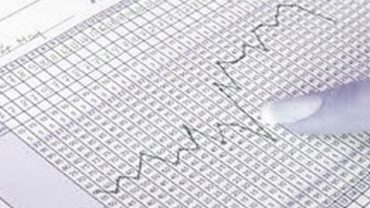Physical Fertility Signs
Besides changes to your cervix around the time of ovulation, you may also notice other physical changes. Spotting and bleeding may occur mid-cycle, indicating possible fertility, due to hormonal changes leading up to ovulation. Backaches, breast tenderness or changes, feeling sick to your stomach, softer clearer skin, abdominal bloating, rectal pain and water retention all show that your hormonal levels are rising and falling. Headaches can sometimes accompany ovulation as well. Occasionally women notice that there is a pattern to when they get headaches during their cycle. Make sure you chart all the additional physical signs that you notice, so you can more easily identify your fertile and infertile times.
Some women actually feel ovulatory activity every month or occasionally. Pain in your lower abdomen or pelvis during ovulation (or just before or after) is fairly common, although some women don’t feel anything. This usually happens midway through your menstrual cycle, about 2 weeks before your next period. This condition is often called mittelschmerz (MITT-ul-shmurz), which is a medical term that comes from the German words for “middle” and “pain.” It usually lasts only a short time, anywhere from a few minutes to a few hours, but it may continue for an entire day.
Mittelschmerz occurs during ovulation, when an egg is released from your ovary. No one knows for sure what causes it, but it’s quite possible that just before ovulation, follicle growth stretches the surface of your ovary, causing you pain. It’s also possible that blood or fluid released from the ruptured follicle irritates the lining of your abdomen, leading to discomfort. Slight bleeding or spotting is not uncommon and may also occur during this time, accompanying pain.
Ovulatory pain can happen on either side of your abdomen or even in the middle, although it is more commonly experienced on the right side. It may be felt on one side one month, then switch to the opposite side the next month, or it may be felt on the same side for several months in a row. The pain typically radiates from whichever ovary is ovulating. Some women notice cramping on one side or pain resembling menstrual cramps. The pain may be described as a nagging pain that begins as a sharp twinge and diminishes to a dull ache or tenderness or discomfort near the ovaries. It can be intermittent or constant, but is rarely severe although it can sometimes be aggravated by intercourse, working out or other physical activity.
Pain during ovulation is usually easy to recognize because of its timing and location. If you notice cramping or pain, be sure to record this on your chart. Ovulatory pain can be a useful guide for some women and may help you further understand your cycles and also assist you in monitoring when you ovulate.

